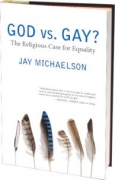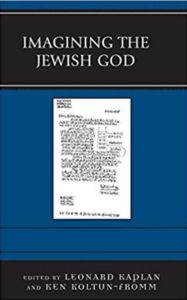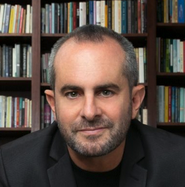From God In Your Body: Introduction
The Union of Body and Soul
This book is about embodied spiritual practice: how to experience the deep truths of reality in, and through, your body. To some, this may seem like a contradiction. Aren’t spirit and body separate? Isn’t a ‘spiritual” experience precisely one that is “out of body,” in a special state of mind?
In the paths we will explore here, spirit and body are not separate at all. Nor is spirituality a special feeling, or a trance, or a vision, although such phenomena may accompany some spiritual practices. Rather, because Being is omnipresent, the experience of spirituality is nothing more or less than a deep, rich experience of ordinary reality. Realization is simply waking up. And the body, because it is always present “here and now,” is both the best vehicle for doing so, on the one hand, and on the other, how holiness expresses itself in the world.
Jews are sometimes called the “people of the book.” But as many scholars have observed, they are equally the people of the body. Consider the core practices of mainstream Jewish religion. Traditional observance of the Sabbath and holidays involves not beliefs or ‘spiritual feelings,” but taking and refraining from certain physical actions. Jewish dietary laws are about foods, not sentiments; Jewish ethics is about action, not intention. Even Jewish prayer—built around the kneeling (barchu), listening (shema), and standing (amidah) prayers—is built not upon some abstract soul or spirit, but upon the body. This body-centricity of the Jewish tradition is well known in academic and scholarly circles, but ironically, forgotten in many religious ones.
Even the Kabbalah, the vast body of Jewish mystical and esoteric literature, understands the greatest spiritual achievement not as transcending the body, but as joining body and spirit together. Symbolically, the Kabbalists imagined the six-pointed Jewish star as one triangle pointing upward—toward heaven, transcendence, and the emptiness of the Infinite—and another pointing downward, toward the earth, Immanence, and the endless varieties of experience. The great goal of Kabbalah, which literally means “receiving,” is not to privilege one triangle over the other—to flee the material world in favor of the spiritual one, or vice versa. It is the sacred marriage of the two.
This union has many iterations: body and spirit, earth and sky, experience and theory, the Presence and the Holy One, feminine and masculine, immanence and transcendence, substance and form, the many manifest energies of the world and their ultimate, essential unity. And the opportunities for consummating it are omnipresent, because there are no boundaries around the Infinite. Thus religion belongs in bed as well as in the sanctuary; and bodywork belongs in temples as well as on yoga mats. Sex, eating, bathing—these are not necessary evils in the Kabbalah. Rather, the body, about which there is so often much shame and so much fear, is the most practical place for spiritual work.
This integral vision is reflected in the kabbalistic concept of the four worlds, which is often used in this book as an organizing principle for spiritual practice. Each of the worlds (a chart is in the appendix) has a nest of symbolic associations and experiential elements, but perhaps their most important feature is that, because each world is important, the familiar hierarchies of spirit over body, and mind over heart, suddenly make no sense. As we will see, the worlds of asiyah (action), yetzirah (formation), briyah (creation), and atzilut (emanation) and four souls of nefesh (fleshly, ‘earth’ soul), ruach (emotional, ‘water’ soul), neshamah (intellectual, ‘air’ soul) and chayah (spiritual, ‘fire’ soul) roughly map onto the familiar matrix of body, heart, mind and spirit. But all are really a reflection of yechidah (“unity”). Thus the ideal is not transcendence alone, but transcendence with inclusion of the “lower” in the “higher.” Forgetting the body in favor of the soul is like forgetting the foundation of a house in favor of the living room; it will not hold.
The values of integration, union, and balance affect how one studies this wisdom as well. On the one hand, intellectual theories give meaning and shape to experience. On the other hand, experience is essential: material, embodied experience—that which often wanders in exile, like a forgotten princess awaiting her redemption. Enlightenment is simply knowing the truth of what is, but knowing like the knowing of Adam by Eve. Secret wisdom, such as that of Kabbalah, is not secret simply because its formulae are not disclosed; with just a few years of education, you can learn their words. Rather, secret wisdom is such because it is experiential wisdom, and thus impossible to convey in words at all.
So, in this book, we will speak of both theory and practice. For some, there may be too many words, too many concepts; for others, too much emphasis on subjective experience. Yet an integral spirituality, one which marries heaven and earth, must embrace intellect and the body, tradition and experience, analytical rigor and spiritual courage. Both sides are essential: the abstract (“God”) and the concrete (“your body”). Theories of the body, pathways of the soul—these are wonderful maps, and excellent recipes for wisdom. But the map is not the territory, and the recipe is not the meal.
“God”?
What is meant by the word “God”? And how does an experience in your body have anything to do with “God in your body”?
When I use the word “God” in an intellectual, third-person way, I mean what the Ancient Hebrews called YHVH—What Is; Being; what was, is, and will be. Intellectually, for monotheists, God is Ein Sof, infinite, and thus must fill all creation; otherwise, God would go up until a certain point, and then have a limit—and thus, not be infinite. Consequently, what appear, on the surface, to be computers, trees, and hamburgers are actually, in their essence, God. The Ein Sof is not a figure within or beyond the universe, a person who either does or does not exist; the Ein Sof is the ground of being itself. Forms which appear to be real are really manifestations of It. Or, to paraphrase a teaching from another tradition, God does not exist; God is existence itself.
But what if you don’t “believe in God” in this way? Feel free to set aside the word and focus simply on waking up from illusion into reality. It’s easy to see that ordinary experience is usually obscured by desires, conventions, and social constructions—walk into a room and see what you notice, how quickly your mind judges it as good or bad, and how much of our involvement with life is really involvement with the ‘small self,” the selfish egoic inclinations. Even linguistic and social concepts construct our experience of reality. For example, if you’re sitting in a chair right now, why are you not falling on the floor? Because of ‘the chair”? Or because of all sorts of molecular properties of wood or metal, which derive from invisible forces of electromagnetism and gravity, and on and on and on? And who are “you” apart from the illusions produced by a well-functioning brain, like the images at the cinema which seem to be so whole? The sum of all these forces, beyond label, beyond self—this is what is meant by “Being.” Nothing more.
So much for the plane of the mind. In the realm of the heart, when I speak of “God” in the second-person, as You, then the God-language of myth and anthropomorphism are not symptoms of fuzzy thinking but expressions of yearning. Not rational, but, then, neither is love—and would we be the richer for auditing out these “errors” from our experience? I find that when I relate to Being as God, I am able to better cultivate love, reverence, connection, personal relationship, gratitude, value, and ethics. The heart prays and cries and opens—and the object of these hopes, perhaps half-projected, I find echoed in the millennia of Jewish yearning for God.
So I invite you to stay with experience, rather than theology. Rather than starting from a position of “God exists, therefore I must be grateful to Him/Her/It,” just use the body to experience gratitude, and see what happens. In the first chapter, for example, we will look at eating as a spiritual practice. Our bodies are hard-wired to enjoy eating, and yet we often seem bored by it, and distract ourselves with television, or reading, or conversation. With close attention to a few bites of our meal, though, amazing things can happen. The words v’achalta, v’savata, u’verachta—you will eat, you will be satisfied, and you will bless—suddenly make sense. The mind is quieted, the body is energized, and the food tastes more delicious than usual. Our attention is called to the miracle of eating: that you are turning lettuce into human, that your body knows exactly what to do to take what it needs from the food and discard the rest. All that’s needed is time, and attention. Try it and see.
Consider, too, the miracles we can’t perceive. At this moment, there are over seventy-five trillion cells in your body. How might that help explicate the Psalmist’s joy—ma gadlu ma’asecha yah—how great are Your creations, Yah? Or the midrashic idea, in Bereshit Rabba 12, that “The King of Kings counts every limb in your body, puts it in its proper place, and builds you to perfection, as it says ‘is he not your father, who created you, the one who fashioned and established you?'” How would our sages respond to knowing that we each lose, on average, three million cells every second? How does this influence our understanding of God as mechayeh meitim, that which gives life to the dead?
Let theology follow experience. In chapter after chapter, our goal will be simple: through the body, to release the hold of the small, illusory, always-desiring self—the yetzer hara—and uncover our true, embodied, natures, beneath and beyond. Without any theology, without any doubt or belief—just to experience what is, instead of the illusions our minds are frantically creating. Ordinary reality is plenty.
[The Idea of Practice]
[Cutting and Pasting]
An Invitation
Embodied spiritual practice, simply, works. Letting go of the mind, letting the body lead, and as a result transcending the illusions of the small mind to access a deeper consciousness—we are thus turned toward the holy. This is how to ‘seize the day,” and “suck the marrow out of lifeâ€: to turn down the static of existence, and hear its subtle, softer music. Hakarat hatov, the sages called it: recognizing the good.
Jewish spiritual practice is an integral practice whose purpose is not to favor the body, heart, mind, or soul over the other parts of the self—but to join all four together, to experience life fully, richly, and deeply. Why obey the dietary laws, if one could contemplate them instead? Why perform a physical circumcision if a ‘spiritual” one were good enough? Because the “lower” does not merely serve the “higher.” The body, independent of the heart’s stirring and the misgivings of the intellect, is the site of holiness; even if there is no apparent change in the mind, and no softening of the heart, transformation takes place within the field of the body. This is not consolation; it is liberation. By no longer evaluating experience according to “how it makes me feel,” the grip of an important illusion is loosened: the illusion that you are your mind, and that reality only matters when the ego is affected. Thus the body is simultaneously the ground of traditional Jewish law, and the deepest of its esoteric truths.
“Man is of flesh, while the angels are of fire; but man is superior,” said Rabbi Nachman of Bratzlav, the 19th century Hasidic master whose startling, innovative, and often quite challenging teachings will recur throughout this book. Why? Because we have the opportunity not merely to transcend our bodies, but to unite them with spirit. Of course, spiritual experiences can be very valuable; they offer glimpses of undreamt-of horizons, and inspire the soul. But enlarging the field of significance beyond the bounds of preference—that is a mark of liberation. With such simplicity are heaven and earth, hidden and revealed, Holy One and sacred Presence, united. Indeed, the marriage is already underway, and the wedding banquet is what you see before you now. Consider this your invitation.















